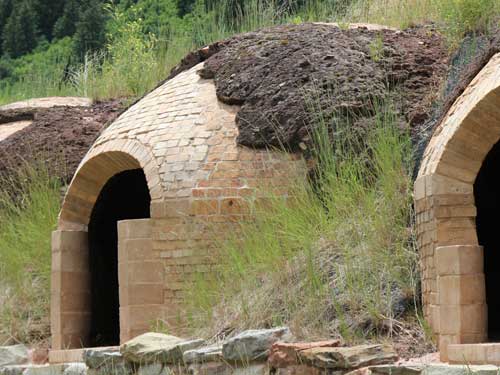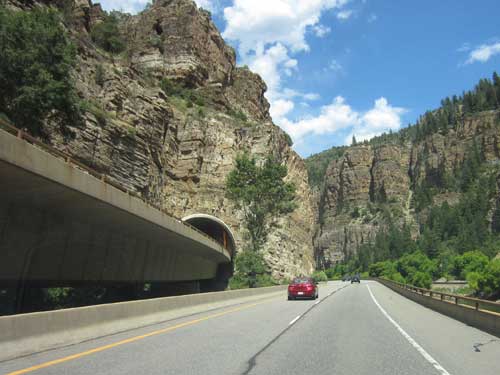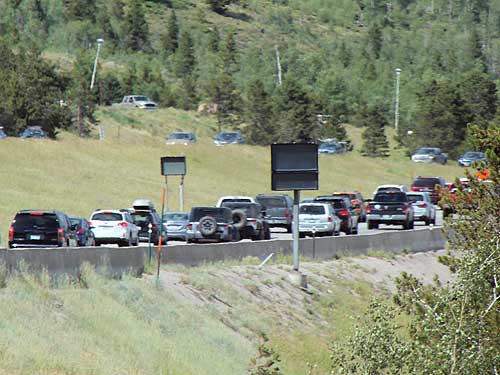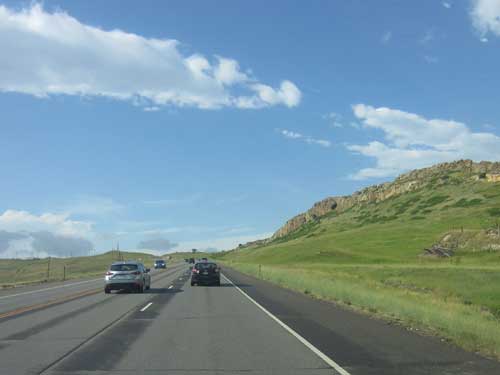GUNNISON (Day 19 - part 3)
Near Redstone was a long row of 'beehive' coke ovens, built in the late 1890's to carbonize (or 'coke') coal mined nearby for the Colorado Fuel and Iron Company. Coal was loaded into these brick ovens through a hole in the top and converted to coke when heated in an oxygen-deficient environment. It was removed through the opening in the front and loaded onto rail cars, to be used in smelting ores and for steel production.


After years of not being used, these historic structures have deteriorated due to weather, erosion, vandalism and plant growth. Restoration has begun to preserve them. About 50 of them will be stabilized, four will be completely restored (based on old photographs), and a few left untouched.
Stabilization involves removing all vegetation from in and around the oven, rebuilding a portion of the stone retaining wall and reconstructing any unstable portions. Full restoration also involves building the stone retaining wall to its original height.

One of the restored ovens

The backside of the ovens

Entering Glenwood Canyon
This 12-mile section of road through Glenwood Canyon was started in the 1960's but not completed until 1992. Environmentalist protests required new designs that would minimize impact to the fragile canyon environment. The solution was to build two separate tracks, one above the other. The final design included 40 bridges and viaducts, 3 tunnels and 15 miles of retaining walls. At a cost of $490 million, this was one of the most expensive rural highways per mile built in the US.



Oncoming traffic rides high above.


Floating on the Colorado River, the powerful force that carved this canyon

A storm approaches


Fortunately in July, there isn't any need for these snow gates.




The mountains slopes are carved with the paths of winter ski runs.



Watch for wildlife...

... and a potentially pricey ticket!
here was a huge traffic jam at Dillion, so we listened to the advice of the gps and turned onto the road going over Dillon Dam. It was a great decision!

From this...

... instantly to this!

Our detour
The idea to dam the Blue River and divert the water to Denver originated in the early 1900s. Construction of the 231-foot tall earth-filled dam began in 1961 and was completed in 1963. Dillon Reservoir (or Lake Dillon) has an average depth of 79 feet.

Due to security concerns, especially to Silverthorne which lies directly beneath the dam, guard shacks lie on either end of the structure.

A lovely drive along the lake


Crossing the dam

The second security booth


A steady climb up

The Eisenhower–Johnson Memorial Tunnel is a dual-bore, four-lane tunnel that crosses the Continental Divide at 11,158 feet. Upon completion, it was the highest vehicular tunnel in the world. The tunnel is the longest mountain tunnel (just under 1.7 miles) and highest point on the Interstate Highway system.
Construction on the first bore began in 1968 but the project was fraught with setbacks and went well over time and budget. It was only supposed to take three years but didn't open until 1973. The second bore was started in 1975 and finished in 1979. The initial cost estimate for the Eisenhower bore was $42 million; the actual cost was $108 million. The cost for the second (Johnson) bore was $102.8 million. Not included is about $50 million in other construction expenses.

The westbound bore is named after Dwight D. Eisenhower (the president for whom the Interstate system is also named).

The eastbound bore honors Edwin C. Johnson (a senator who lobbied for an Interstate highway to be built across Colorado).


On the other side of the tunnel begins the long way down.

It promptly began to rain... then turned quickly into heavy hail and even sleet. The ground turned white. All the while it was a balmy 61 degrees outside!

The start of some weather

Bridal Veil Falls in Idaho Springs

Hail turned the roads white.

And just like that, the storm was over and blue skies returned.


Approaching the foothills of Boulder

A double rainbow ends the trip!
We arrived back in the early evening... with plans for another trip next year! Our total mileage: 4,155
return

